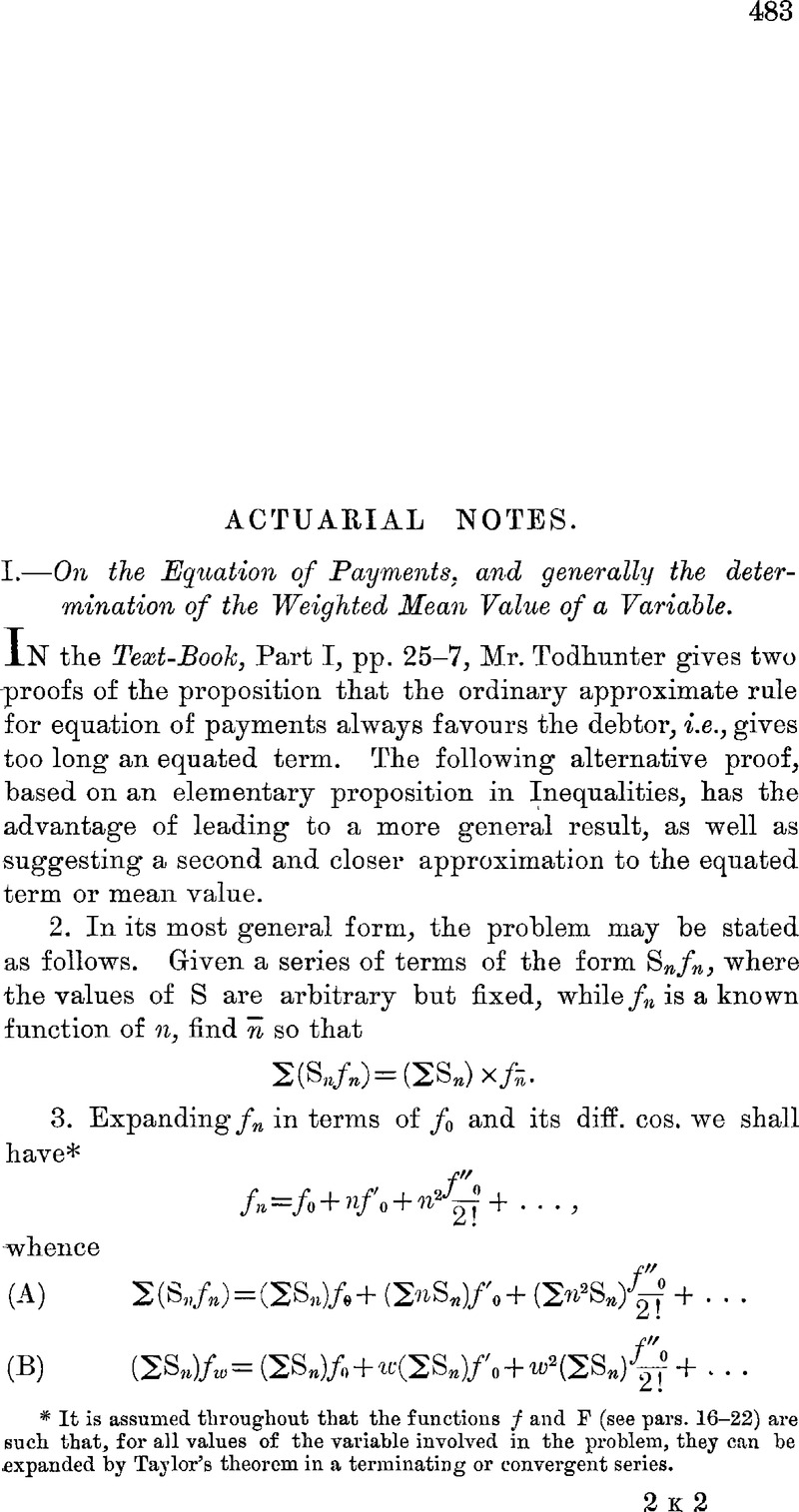No CrossRef data available.
Published online by Cambridge University Press: 18 August 2016

page 483 note * It is assumed throughout that the functions f and F (see pars. 16–22) are such that, for all values of the variable involved in the problem, they can be expanded by Taylor's theorem in a terminating or convergent series.
page 484 note * The inequality becomes an equality when all the quantities a, b, c… are equal.
page 490 note * The solution given in the text (commencing with two terms and extending the result to three, and so on) has the advantage of being independent of any subsidiary proposition; but Mr. S. E. Macnaghten, F.I.A., has pointed out to the author that the result may be obtained directly for any number of terms by means of an extension of the theorem of Par. 4, given by Chrystal, Part. II., p. 49. The extension shows that the quantities
etc., are in ascending order of magnitude. Hence if equation (9) be formed for any number of terms, it may be shewn—precisely as it is in the text for two terms—that the coefficients are first – and afterwards + ; and the rest of the argument is as before.